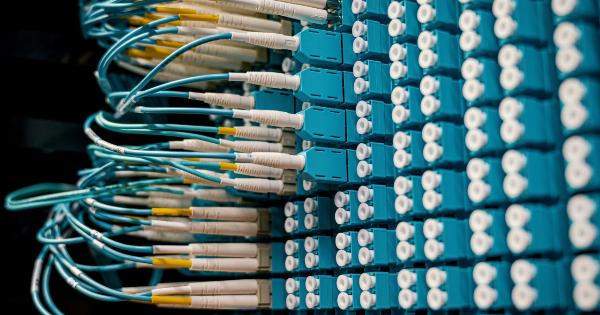Electric toothbrushes have become increasingly popular in recent years due to their ability to provide a more efficient and effective clean compared to manual toothbrushes.
These devices use oscillating or vibrating bristles to remove plaque and food particles from the teeth and gums. While electric toothbrushes offer numerous benefits for oral health, it is essential to use them correctly to avoid potential risks and complications.
1. Aggressive Brushing and Gum Damage
One of the most common mistakes people make when using an electric toothbrush is applying excessive pressure while brushing. Many individuals believe that more pressure will lead to a better clean, but this is a common misconception.
In reality, pressing too hard can harm the gums and lead to gum recession, tooth sensitivity, and even tooth damage.
To prevent this risk, it is crucial to let the electric toothbrush do the work for you. Simply guide the brush along the surfaces of the teeth and gums without applying excessive pressure.
The vibrations or oscillations of the electric toothbrush will effectively remove plaque without the need for excessive force.
2. Overbrushing and Enamel Erosion
Overbrushing refers to brushing the teeth for too long or too frequently. Some people may mistakenly believe that brushing longer and more often will result in cleaner teeth.
However, overbrushing can lead to enamel erosion, which is the wearing away of the protective outer layer of the teeth.
Using an electric toothbrush can make it easier to overbrush, as the device often has timers or built-in indicators to encourage longer brushing sessions.
It is important to follow the recommended brushing time provided by dental professionals, typically two minutes twice a day. Avoid excessive brushing, as it can weaken the enamel and increase the risk of tooth sensitivity and cavities.
3. Improper Brush Head Maintenance
Another risk of using an electric toothbrush incorrectly is neglecting to maintain the brush head properly. Over time, the bristles on the brush head can wear out or become frayed, which can reduce their effectiveness in removing plaque.
It is essential to regularly inspect the brush head for any signs of wear and tear. Most manufacturers recommend replacing the brush head every three to four months or sooner if the bristles become worn.
Failing to replace a worn brush head can result in ineffective cleaning and potential damage to the teeth and gums.
4. Sharing the Electric Toothbrush
Sharing an electric toothbrush with another person may seem convenient, but it can pose several risks to oral health.
Sharing a toothbrush can spread bacteria and viruses from one person’s mouth to another, increasing the likelihood of infections and diseases.
Each individual should have their own electric toothbrush to maintain proper oral hygiene and prevent the transfer of harmful microorganisms. Sharing a toothbrush may also lead to cross-contamination of toothpaste and other oral care products.
5. Neglecting Regular Manual Flossing
An electric toothbrush can efficiently remove plaque and debris from the surfaces of the teeth. However, it may not effectively clean between the teeth and along the gum line.
Neglecting to floss regularly while relying solely on an electric toothbrush can increase the risk of cavities and gum disease.
Flossing is essential to reach areas that a toothbrush cannot access. It helps remove plaque and food particles from the tight spaces between the teeth, reducing the risk of decay and gum inflammation.
Therefore, it is crucial to incorporate manual flossing into the daily oral hygiene routine, even when using an electric toothbrush.
6. Inadequate Charging and Battery Maintenance
Electric toothbrushes are powered by rechargeable batteries. Neglecting to charge the toothbrush adequately can lead to insufficient power and ineffective cleaning.
It is important to follow the manufacturer’s instructions regarding battery charging and maintenance.
Some electric toothbrush models have indicators that notify users when the battery requires charging. Regularly check the battery level and recharge the toothbrush as needed to ensure optimal performance.
Additionally, it is advisable to keep the toothbrush on a charging base or in a designated holder to maintain its battery life and prevent damage.
7. Using the Wrong Brushing Technique
Using an electric toothbrush correctly involves using the appropriate brushing technique. Many people mistakenly use a back-and-forth motion, similar to how they would brush with a manual toothbrush.
The recommended technique for using an electric toothbrush is to hold the brush at a 45-degree angle to the gums and teeth and gently move the brush in small circular motions.
This technique ensures that the bristles reach all tooth surfaces and effectively remove plaque without causing harm to the gums or enamel.
8. Ignoring Dental Professionals’ Recommendations
Dental professionals play a crucial role in guiding individuals on proper oral hygiene practices. Ignoring their recommendations can increase the risk of using an electric toothbrush incorrectly.
It is essential to consult with a dentist or dental hygienist about the appropriate use and technique of an electric toothbrush.
These professionals can provide personalized advice based on an individual’s oral health needs and help prevent potential risks associated with improper use.
9. Allergic Reactions to Brush Materials
Some individuals may have allergies to certain materials used in electric toothbrushes, such as the bristles or the handle. Allergic reactions can manifest as skin rashes, inflammation, or swelling.
If you notice any unusual symptoms after using an electric toothbrush, it is important to discontinue use and consult with a healthcare professional.
They can help determine whether an allergic reaction is the cause and recommend alternative toothbrush options that are compatible with your allergies.
10. Ineffective Plaque Removal
Using an electric toothbrush incorrectly may result in ineffective plaque removal. Inadequate plaque removal can contribute to tooth decay, gum disease, and bad breath.
To ensure efficient plaque removal, it is important to follow the recommended brushing technique and duration.
Additionally, regular dental check-ups are crucial for identifying any areas that may require extra attention during brushing and ensuring optimal oral health.





























